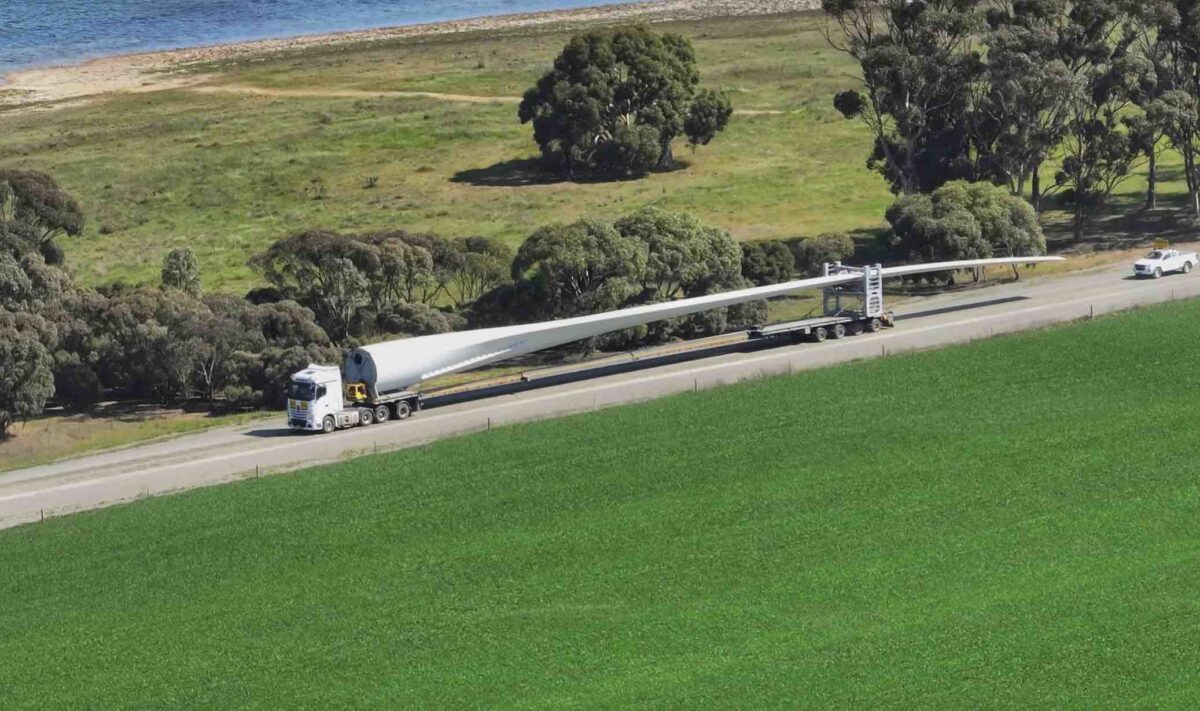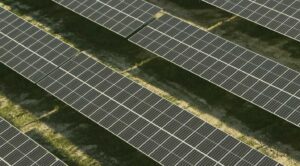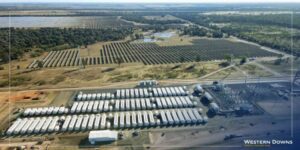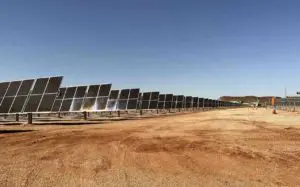Two key project wins in the first large scale generation tender under the Capacity Investment Scheme means that South Australia is now set to become the first gigawatt-scale grid in the world to reach 100 per cent “net” renewables, all through wind and solar.
The state currently leads the country, and the world, with an average share of more than 72 per cent renewables (all wind and solar) over the last 12 months, and has recently accelerated its target of reaching 100 per cent net renewables to 2027, rather than 2030 as first planned.
That target has received a major boost with news that two large wind projects – the 300 MW first stage of the massive Goyder North renewable hub and the 274 MW Palmer wind project – were among the 19 awarded contracts under the first tender of the CIS, the largest renewables auction ever to be held in Australia.
Reaching 100 per cent “net renewables means the state will still export excess wind and solar at times, and import power from neighbouring states when needed.
The amounts it can export and import will increase with the addition of the new transmission link to NSW, Project EnergyConnect, the first stage of which is going through tests.
Critics of renewables often complain that “net” percentages are deceiving because of the imports and exports, but the reality is that this is common to every connected grid.
France, for instance, is said to generate 65 per cent of its electricity needs from nuclear, but it also exports large amounts when it has surplus power (their plants do not like to be turned down), and also imports a lot when needed, as in 2022 when half of its reactors were off line due to varying reasons.
The two new wind farms, along with the soon to be completed 412 MW Goyder South wind farm, will lift the state’s installed wind capacity from 2.3 GW to more than 3.2 GW, boosting its share of generation to around 60 per cent.
The state has already secured contracts for another four big battery projects under the first pilot stage of the CIS, which was focused on long duration storage.
These include the 250 MW/1,000 MWh Limestone West battery proposed by UK-based Pacific Green Energy, Zen Energy’s 170 MW/650 MWh Solar River battery, Pacific Blue’s 60 MW/ 143 MWh Clements Gap battery, and EnergyAustralia’s 50 MW, 200 MWh Hallett battery.
They will add to the exiting Hornsdale, Lake Bonney, Torrens Island and Dalrymple batteries, and the nearly complete Blyth and Templer batteries, and will enhance the state’s ability to store excess wind and solar, particularly rooftop PV, and feed it back into the grid at peak times.
Goyder North is being built by Neoen, which already operates the Hornsdale wind farms and big battery, and is nearing completion of the 412 MW first stage of the Goyder South wind farm.
Goyder South and Goyder North, located either side of the town of Burra, have the potential to develop into a multi gigawatt renewable hub with the addition of more wind, solar and potentially more than 4 gigawatt hours of battery storage.
Palmer is being developed by Tilt Renewables, about 50kms east of Adelaide, and will add to the Snowtown 1 wind project that the company already operates in that state.
South Australia is often criticised as having an unreliable grid. But a recent report from the Australian Energy Market Operator showed that it was actually the only state that it not face a shortfall in “system strength”, despite having no so-called “baseload” power stations and being largely dependent on inverter based technologies.
It has relied on peaking plants, both gas and diesel, to fill in the gaps of wind and solar – along with imports – but it should be noted that nearly all of these peaking generators were built to support the state when it relied heavily on the now shuttered coal generators and large combined cycle gas generators.
The state has sought an emergency rule change that will allow it to keep two mothballed peaking generators on standby over the next two summers – until the new interconnector and the new batteries are completed.
It is also piloting a new capacity scheme to provide incentives for many of the remaining peaking generators to stay in the system for a few more years and is manages the transition. Some will need to stay in the grid for a long time, although they will be rarely used.
The state is also working on a 250 MW hydrogen power plant near Whyalla to boost its dispatchable power resources.







